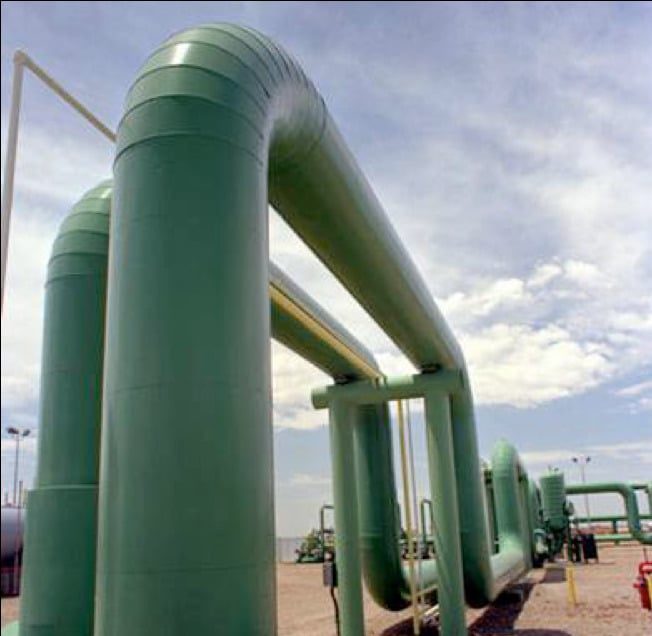The U.S. Department of Energy (DOE) announced the award of nearly $34 million to 19 industry- and university-led research projects to make clean hydrogen a more available and affordable fuel for electricity generation, industrial decarbonization, and transportation. With the recent selections, DOE’s Office of Fossil Energy and Carbon Management (FECM) has announced investments of more than $122 million in 72 projects since January 2021. “These projects support DOE’s Hydrogen Shot initiative, which seeks to reduce the cost of clean hydrogen by 80% to $1 per 1 kilogram in one decade to grow new, clean hydrogen pathways in the United States,” said the DOE.
A research team from Korea and US, led by Chanho Pak from Gwangju Institute of Science and Technology in Korea, has developed a novel mesoporous tantalum oxide (Ta2O5)-supported iridium nanostructure catalyst via a modified formic acid reduction method that reportedly achieves efficient PEM water electrolysis.“The electron-rich Ir nanostructure was uniformly dispersed on the stable mesoporous Ta2O5 support prepared via a soft-template method combined with an ethylenediamine encircling process, which effectively decreased the amount of Ir in a single PEMWE cell to 0.3 mg cm–2,” said Pak. The Ir/Ta2O5 catalyst design improved the utilization of Ir, while facilitating higher electrical conductivity and a large electrochemically active surface area. “X-ray photoelectron and X-ray absorption spectroscopies are used to demonstrate the strong metal-support interaction between Ir and Ta. The charge transfer from Ta to Ir has confirmed through density functional theory, which leads to enhanced OER activity of Ir/Ta2O5 (ɳ = 0.385 V) over IrO2 (ɳ = 0.48 V). Ir/Ta2O5 presents a higher activity with an overpotential of 288 ± 3.9 mV at 10 mA cm−2 and mass activity of 876.1 ± 125.1 A gIr−1 at 1.55 VRHE,” the researchers wrote in the paper “Electron-rich Ir nanostructure supported on mesoporous Ta2O5 for enhanced activity and stability of oxygen evolution reaction,” which was published in the Journal of Power Sources.
West Virginia Governor Jim Justice announced that Fidelis New Energy has selected Mason County as the site for a lifecycle carbon-neutral hydrogen production facility called The Mountaineer GigaSystem. “Mountaineer will be implementing the proprietary FidelisH2 technology that enables the production of hydrogen with zero lifecycle carbon emissions from a combination of natural gas, carbon capture, utilization, and sequestration (CCUS) and renewable energy,” said the West Virginia Governor. The project should be built in four phases, each producing over 500 metric tons per day (MTPD) of net-zero carbon hydrogen at an approximate capital cost of $2 billion per phase. The first FidelisH2 train of the Mountaineer GigaSystem should commence operations in 2028. Fidelis New Energy is also working on an onshore CO2 storage facility in Aalborg, Denmark.
Denmark‘s Minister of Industry Morten Bødskov visited HySynergy to discuss green fuels and the next big export adventure, hydrogen. “On- and offshore renewable energy combined with Power-to-X and the production of green fuels can become the next big export adventure supporting finance Denmark’s welfare society for generations to come, says Everfuel and Crossbridge Energy,” said Everfuel, underling that the facility already displays a small hydrogen pipe that can deliver more than 8 tons of hydrogen per day from the producer Everfuel to the customer Crossbridge Energy.
Wärtsilä will provide the front-end engineering design (FEED) for the liquefaction and storage of liquefied synthetic methane (LSM) at the plant to be built in Kristinestad, Finland, by Koppö Energia, a joint venture between Germany’s Prime Green Energy Infrastructure Fund and CPC Finland. “The FEED will be booked by Wärtsilä in Q3, 2023. The Power-to-X plant … will have a capacity of 200 MW and will convert green electricity into hydrogen and sustainable LSM. Up to 500 MW of wind and 100 MW of photovoltaic power will be developed under the Koppö Energy Cluster to supply the plant with completely emission-free renewable energy,” said the Finnish technology company.
The British government announced that 262 MW of electrolyzer capacity had made it to the penultimate step of the Hydrogen Business Model allocation round. The government shortlisted 17 projects to negotiations. “Government is working at pace to ensure that the first electrolytic allocation round (HAR1) concludes before the end of 2023. We expect to award contracts totaling up to 250MW of capacity from HAR1, subject to affordability and value for money. We aim for contracts to be awarded in Q4 2023, with first projects becoming operational in 2025,” said the Department for Energy Security & Net Zero.
Toppan announced it plans to enter the hydrogen market, leveraging its base sheet transfer technology and uniform coating process for large surfaces. The Japan-based company installed production equipment for Catalyst Coated Membrane (CCM)/Membrane Electrode Assemblies (MEA) at its Kochi Plant in Kochi Prefecture. “Aiming to enter the hydrogen energy market, Toppan is using a first-of-its-kind proprietary manufacturing method to enable mass production of high-performance, high-quality CCM/MEAs and is launching sales in August,” said the Japanese company. CCM/MEAs are core components of water electrolysis equipment for hydrogen production.
This content is protected by copyright and may not be reused. If you want to cooperate with us and would like to reuse some of our content, please contact: editors@pv-magazine.com.








By submitting this form you agree to pv magazine using your data for the purposes of publishing your comment.
Your personal data will only be disclosed or otherwise transmitted to third parties for the purposes of spam filtering or if this is necessary for technical maintenance of the website. Any other transfer to third parties will not take place unless this is justified on the basis of applicable data protection regulations or if pv magazine is legally obliged to do so.
You may revoke this consent at any time with effect for the future, in which case your personal data will be deleted immediately. Otherwise, your data will be deleted if pv magazine has processed your request or the purpose of data storage is fulfilled.
Further information on data privacy can be found in our Data Protection Policy.